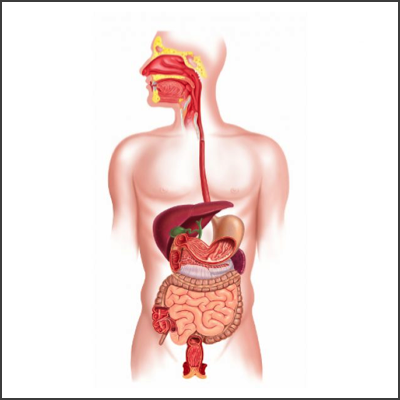At it’s most basic, nutrients from the food we eat, combined with oxygen from the air we breath, provide the raw materials needed to generate the energy that powers movement… and fuels our run.
However the body uses these resources through a complex series of processes involving the cardio-respiritiory system and the digestive system to ultimately deliver a consistent power supply to our muscles.
This post is going to look at these processes and give you a strong foundation to understanding the physiology that underpins our running, or indeed any fitness activity.
Source of Energy
The stomach and the intestine process the foods we consume. When running we rely mostly on energy derived from carbohydrates, but under certain conditions the body will use fat and protein sources too. Once digested, Carbohydrates are broken down and stored as glycogen in the liver and muscles. Fats are processed and stored in the liver also, but as fatty acids (correctly called triglycerides) or as fat in adipose tissue. Proteins break down into amino acids which are the building blocks for new muscle tissue.
Increased glycogen stores
With proper training, the body learns to store higher levels of glycogen in the muscles, and also becomes more efficient at conserving it at your race pace. This is particularly important when we are planning to run for longer than approximately 90 minutes, by which time typically our glycogen stores would be depleted. Since glycogen is the most efficient fuel source, it is advantageous to have it last for as long as possible.
Fat Cells
Energy rich triglycerides are stored as fat in muscle and in adipose tissue, then broken down into free fatty acids and released into the bloodstream when required to be used as an energy source. It should be noted though that this is a comparatively slow process compared to accessing glycogen as cellular fuel. This means that our work output will be compromised. In straight forward terms you slow down!
Accessing Energy
Muscle growth, renewal, and repair, as well as muscle contractions of the major muscle groups while running all require energy. The body draws a supply of the appropriate energy directly from the liver, with backup supplies available from muscle and fat cells.
Energy Systems
The molecule adenosine triphosphate (ATP) stores, transports, and releases the energy used for muscle contractions. The body has three way to access ATP, or to put it another way three Energy Systems. These three systems work in harmony to fuel our run, but the primary system being used will be determined by the duration and intensity of the exercise.
The first port of call is ATP that is already stored in cells and therefore is highly readily available. Muscle fibres store enough ATP to power contractions for up to 10 seconds, providing a lot of energy rapidly for explosive short term use only. This would fuel a maximal effort short sprint. Once the ATP store is depleted it take about five minutes for the body to replace it. In addition to a maximal effort, when we first start to run (accelerating from stationary or walking) we use ATP to fuel this transition and get us moving.
After the ATP store is depleted, food energy, usually glucose, is converted to ATP within muscle tissue to maintain a steady energy supply. This is done either through anaerobic or aerobic cellular respiration. Because we are having to make ATP, energy availability is slower than using ATP that is already ready. Therefore in this state we are not going to be able to fuel maximal effort.
For high intensity running, where the oxygen supply is unable to meet the demand, the body uses anaerobic cell respiration. This system fires up when you start to run and powers movement until the aerobic system (which is slower) kicks in and catches up.
Aerobic cell respiration is the primary system used to power moderate or low intensity work. It can draw on glucose stores for up to 90 minutes. Endurance running and most triathlon are mostly aerobic activities, but anytime the body needs a short burst of additional energy which can not be accommodated by the aerobic system, (like a sprint for the line or an overtake) the body draws on the anaerobic system.
Both aerobic and anaerobic respiration begin with a process known as glycogenolysis, which releases glucose from glycogen, after which a chain reaction known as cell respiration takes place to convert the glucose to ATP so that it can be used to power muscle contractions.
In Conclusion
We have looked at one component of how we fuel our runs and that is to understand the base building block of “muscle energy” which is ATP and in summary the pathways the body goes through to convert food ultimately into ATP. The main takeaway (no pun intended!) is that these pathways are not all equally efficient and therefore there is a trade off between speed of availability versus the duration that a particular energy system can be depended upon as the prime system.
In the next post I will look at Cell Respiration in more detail so we start to build a more complete understanding of what these trade offs are and why they exist.




